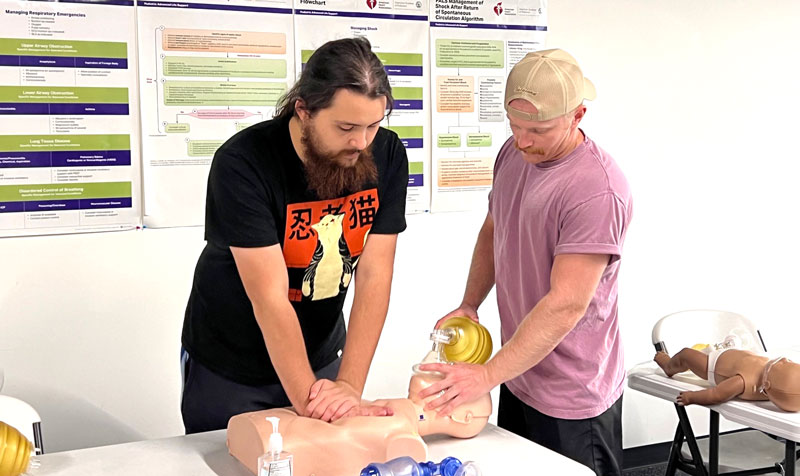Cardiopulmonary Resuscitation, widely known as CPR, is a life-saving technique used in emergencies when someone’s breathing or heart stops. A crucial component of effective CPR involves delivering chest compressions and rescue breaths in a specific sequence, known as the compression-to-ventilation ratio. Historically, these guidelines have evolved, and one of the most significant shifts saw the recommended ratio change from 15 compressions to 2 ventilations (15:2) to the current standard of 30 compressions to 2 ventilations (30:2). This seemingly minor adjustment had a profound impact on survival rates for individuals experiencing sudden cardiac arrest, underscoring the critical importance of continuous research and adaptation in emergency medical protocols. Understanding the reasons behind this fundamental change provides valuable insight into the science of resuscitation and why current CPR training emphasizes uninterrupted chest compressions.

Historical Context of CPR Guidelines
For many years, the 15:2 compression-to-ventilation ratio was the established norm for CPR guidelines, a standard widely taught to healthcare professionals and the general public alike. These guidelines were initially set based on the best available scientific understanding of the circulatory and respiratory systems at the time.
Balance Between Circulation and Oxygenation
The rationale behind the 15:2 ratio emphasized a balance between providing adequate blood flow through chest compressions and supplying oxygen to the lungs via rescue breaths. It was believed that frequent ventilations were essential to maintain oxygen levels and that interruptions for breathing were a necessary part of the resuscitation process.
Limitations of Frequent Interruptions
Under these guidelines, CPR was performed with a rhythm that prioritized alternating between short bursts of compressions and brief pauses for breaths, aiming to maintain both circulation and oxygenation. While effective to a degree, subsequent research revealed limitations to this approach, particularly regarding the impact of compression interruptions.
Scientific Research Behind the Change
The shift from 15:2 to 30:2 was not arbitrary; it was a direct result of extensive scientific research and a deeper understanding of cardiac arrest physiology. Numerous studies meticulously examined the effectiveness of chest compressions, analyzing how different compression rates and depths influenced blood flow to vital organs.
Coronary Perfusion Pressure Research
This research revealed that continuous, high-quality chest compressions are paramount for maintaining adequate coronary perfusion pressure, which is the pressure that drives blood to the heart muscle itself. Interruptions, even brief ones, significantly reduced this critical pressure, diminishing the overall effectiveness of CPR.
Call Us Now
Get the Best CPR Class in Columbus Today!
Organ Perfusion Studies
Furthermore, studies on blood flow and perfusion consistently demonstrated that consistent compressions were more crucial for oxygen delivery to the brain and other organs than previously understood.
Negative Effects of Ventilation Pauses
Research also highlighted the negative impact of minimizing interruptions for ventilation, showing that frequent pauses for breaths could actually be detrimental by disrupting the crucial blood flow established by compressions.
Survival Outcome Correlations
Ultimately, comprehensive survival outcome data from various studies pointed towards a strong correlation between fewer interruptions in chest compressions and improved patient outcomes.
Fundamental Scientific Principles
At the heart of the 30:2 guideline change are several fundamental scientific principles that gained prominence through rigorous research. The most significant of these is the paramount importance of continuous chest compressions. It became clear that maintaining consistent blood flow to the brain and heart is the primary goal during cardiac arrest, and that interruptions, however short, can have a devastating effect on perfusion.
Coronary Perfusion Pressure Maintenance
This led to a strong emphasis on minimizing interruptions for ventilation, recognizing that even small pauses to deliver breaths could negate the benefits of previously delivered compressions. The concept of coronary perfusion pressure maintenance also emerged as a critical factor. High-quality chest compressions are directly responsible for generating this pressure, ensuring that the heart itself receives the oxygenated blood it needs to potentially restart.
Blood Flow vs. Ventilation Frequency
While brain oxygenation considerations remain important, the research demonstrated that adequate blood flow, driven by continuous compressions, is often the most effective way to deliver oxygen to the brain, even if ventilation is slightly less frequent.
Implementation of the 30:2 Guidelines
The pivotal shift in CPR guidelines, particularly the adoption of the 30:2 ratio, was spearheaded by the American Heart Association (AHA) as part of their comprehensive 2005 updates. This decision was not made in isolation but was the culmination of extensive international collaboration and consensus among leading resuscitation organizations worldwide.
Evidence Review Methodology
The evidence review process involved a meticulous examination of countless research studies, clinical trials, and real-world data to identify the most effective CPR techniques. This rigorous process ensured that the updated guidelines were based on the strongest available scientific evidence.
Training and Education Challenges
Implementing these new guidelines presented certain challenges, primarily in retraining millions of healthcare providers and lay rescuers globally.
Updated Training Materials
However, widespread educational campaigns and updated training materials were developed to facilitate a smooth transition, ensuring that the benefits of the new 30:2 ratio could be widely realized.
Benefits of the 30:2 Ratio
The adoption of the 30:2 ratio brought about a multitude of benefits, significantly improving the landscape of cardiac arrest management. From a patient outcome perspective, one of the most compelling advantages has been the documented increase in survival rates. By prioritizing continuous chest compressions, more blood flow reaches vital organs, thus increasing the chances of recovery.
Better Neurological Outcomes
Furthermore, studies have shown better neurological outcomes for survivors, as consistent blood supply to the brain helps prevent long-term damage.
Enhanced Circulation Maintenance
The 30:2 ratio also leads to enhanced circulation maintenance throughout the resuscitation attempt, providing a more stable environment for potential defibrillation and advanced life support interventions.
Simplified Memory Aid
Beyond patient outcomes, there are significant practical advantages to the 30:2 ratio. It is easier for lay rescuers to remember, simplifying the often-stressful process of performing CPR in an emergency.
Reduced Rescuer Fatigue
The reduced frequency of ventilation interruptions also means reduced fatigue for single rescuers, allowing them to deliver higher-quality compressions for longer periods.
More Consistent Compression Delivery
This, in turn, leads to more consistent compression delivery overall, improving the efficacy of the resuscitation effort.
Accessible Training Protocols
Finally, the simplified training protocols associated with the 30:2 ratio have made CPR instruction more accessible and effective for a wider audience, fostering greater public readiness to respond to cardiac emergencies.
Real-World Impact and Implementation
The transition to the 30:2 ratio had a profound real-world impact, reshaping CPR practices across various sectors. Healthcare providers rapidly adapted to the new guidelines, with hospital systems and emergency medical services (EMS) integrating the updated protocols into their standard operating procedures.
In-Service Training Programs
This involved extensive in-service training and educational initiatives to ensure all medical personnel were proficient in the new ratio.
Public CPR Training Evolution
Public CPR training also underwent significant changes, with organizations like the American Heart Association and the American Red Cross updating their courses to reflect the 30:2 standard.
Bystander CPR Empowerment
This widespread public education empowered more individuals to confidently perform effective bystander CPR.
Statistical Improvements
Emergency medical services integration was crucial, as paramedics and EMTs are often the first professional responders on the scene. The consistent application of the 30:2 ratio across pre-hospital care significantly contributed to improved patient outcomes.
Validation of Scientific Basis
Overall, there have been demonstrable statistical improvements in cardiac arrest outcomes since the implementation of the 30:2 guidelines, validating the scientific basis for the change and reinforcing the importance of adhering to current best practices.
Training Implications for Modern CPR
For students undertaking CPR training with organizations like CPR Columbus, understanding the evolution to the 30:2 ratio is not merely historical knowledge; it has direct practical implications for their certification and ability to deliver high-quality CPR. For Basic Life Support (BLS) certification, the 30:2 ratio is the cornerstone of hands-on training, emphasizing the rhythm and consistency of compressions.
Compression Quality Focus
Students learn to minimize interruptions and prioritize chest compressions as the most critical component of initial resuscitation.
ACLS and PALS Integration
Similarly, for Advanced Cardiovascular Life Support (ACLS) and Pediatric Advanced Life Support (PALS) considerations, the 30:2 ratio forms the foundational skill upon which more advanced interventions are built.
Building on Foundational Skills
The emphasis on hands-on training is paramount, ensuring that students develop the muscle memory and proficiency required to deliver quality CPR effectively and confidently in a real-world emergency.
Quality CPR Delivery Techniques
Mastering these quality CPR delivery techniques means understanding not only the ratio but also the importance of proper depth, rate, and full chest recoil, all of which contribute to maximizing the chances of survival for someone experiencing cardiac arrest.
Conclusion
Understanding the evolution from 15:2 to 30:2 compression-to-ventilation ratios represents a crucial shift in CPR methodology that has significantly improved survival rates. This change, driven by extensive research and evidence-based medicine, emphasizes the critical importance of maintaining blood circulation through continuous chest compressions. The updated guidelines reflect our deeper understanding of cardiac arrest physiology and the need to minimize interruptions in chest compressions.
Healthcare providers and community members alike must stay current with these evolving standards to provide the most effective emergency care. The transition to 30:2 ratios demonstrates how medical science continues to refine life-saving techniques based on real-world outcomes and clinical evidence.
Call to Action
Stay ahead of the curve with proper training in the latest CPR techniques. Whether you need CPR certification in Columbus or BLS certification in Columbus, CPR Columbus provides comprehensive, hands-on training that follows current American Heart Association guidelines. Our stress-free classes ensure you master the 30:2 compression ratio and other critical skills.
Don’t let outdated knowledge compromise your ability to save lives. Enroll in our BLS for Healthcare Providers, ACLS, PALS, or CPR and First Aid courses today. Experience why we’re recognized as the best CPR training in Columbus.


